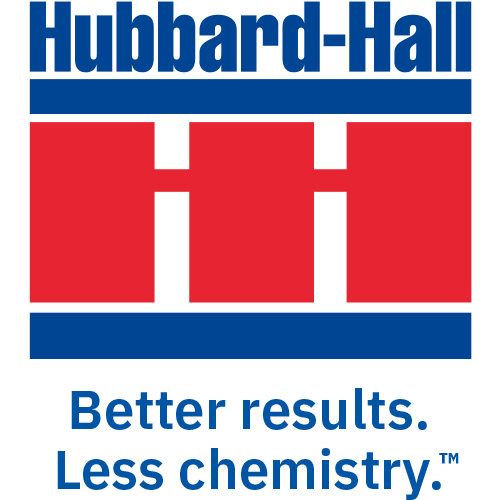To the uninitiated, the daily operation of a phosphate bath can appear daunting – perhaps even a bit convoluted. While temperature and concentration are common parameters for most chemical applications, both phosphate baths have added complexity acid points, acid ratios, dissolved iron, sludging, heating source, & more. In this post, we will highlight some of the key features of these processes and discuss how they can influence your finished coating.
The phosphate coating that develops in these applications is the result of several cyclical competing reactions that occur within the solution and on the surface of the part. Temperature is a key driving force in allowing this reaction to occur, which is why these baths operate at such high temperatures. Typically, a phosphate bath is going to require a temperature over 180°F, the specific operating temp depends on the co-metal and the specific product being used. Running the bath below temp can prevent the reaction from progressing correctly, resulting in a rough, grainy coating – or no reaction at all; run the bath too hot, and you can drive up the free acid level, potentially causing an unwanted attack on the base metal.
Achieving and maintaining these temperatures relies on an adequate and reliable heat source; however, not all are created equally in this scenario. One peculiarity of phosphate solutions is that they are sensitive to large temperature gradients, and gradual heating of the solution is preferred. Intense, localized heat sources, such as gas-underfired tanks, disrupt the chemical equilibrium of the solution. This leads to the bath’s parameters deviating from the operating range, and subsequently negatively influencing the resulting coating. Commonly, these baths are heated with immersion steam coils or plates, which heat the solution over a larger surface area and disperse the heat throughout the solution. Other methods include tanks with an insulated jacket heating system that uniformly heats the surroundings of the tank. High-volume applications also can utilize direct, live steam to heat the bath which when combined with automatic dosing can help to compensate for the volume loss due to drag out.
Perhaps the most confusing aspect of phosphate applications would be their total and free acid values. Many chemical applications require a certain concentration for standard operating procedures, which is quickly observed through a simple titration. Phosphate solutions are primarily formulated with phosphoric acid and similarly made up with some prescribed initial concentration. This value is reflected in what is referred to as the “total acid” value or points – note, that this does not necessarily directly translate into a % concentration by volume. Total acid is determined by titrating to a neutral pH, indicated with phenolphthalein, to measure all the contributing components to the solution’s acidity. Adjustments to the total acid value are made by the addition of stock products to the bath.
What is unique with phosphate baths would be the “free acid” metric of the solution. As mentioned before, these chemistries are based around phosphoric acid, which has the unique characteristic of being a triprotic acid. In essence, it has three acidic protons (hydrogen ions) in the molecule and in solution, it exists to varying degrees in 4 separate states all at the same time. In phosphate applications, this value is the primary constituent to the overall reaction mechanism. If the free acid is too low, the coating will fail to develop; if the free acid is too high, the solution is effectively too reactive and can attack or etch the base metal. The free acid value can be increased by heating the solution without processing work and can be decreased by adding a neutralizing agent to the bath.
Another nuanced aspect of total and free acid is the ratio between the values. This is simply determined by dividing the total acid and free acid values. When a bath is initially made up, the ratio of these components is generally 6:1 total to free acid. As previously discussed, these baths are fluctuating, dynamic systems; and as these baths are used and begin to age, the acid values begin to deviate. While different products will curate specific target ranges for these values individually, the ratio between the values is also important as it suggests a relative composition of the constituents, independent of the total concentration.
Lastly, iron concentration is another key component that is monitored in phosphate applications. As briefly mentioned before, these reactions can utilize either zinc or manganese as a co-metal in the crystal development. In addition to these co-metals, iron is also fundamental in the formation of these crystals. The recommended iron concentration is specific to the product and application but can range anywhere from 0.0-0.4%. Iron levels also have a direct correlation with the resulting coating weight as they add mass to the crystals. Upon initial makeup, the solution will not have any iron dissolved, which is why the baths are often “broken in” with scrap metal or steel wool to dissolve into the solution and increase the iron level. Some applications are designed to run “iron-free,” and will utilize an oxidizing agent or an “accelerator” to precipitate out the excess iron to achieve low coating weights. Determining the iron level is done with a titration involving permanganate, which is a strong reducing agent.
Understanding the state of your bath and how to manipulate it is an important aspect of successfully operating these applications. Each of the aspects described has a resulting impact on the quality of the coating and serves as key indicator ahead of a successful application.
Want to learn more? Listen to our podcast on this topic or request a tech consult.
Contributed by: Connor Callais







Leave a Reply